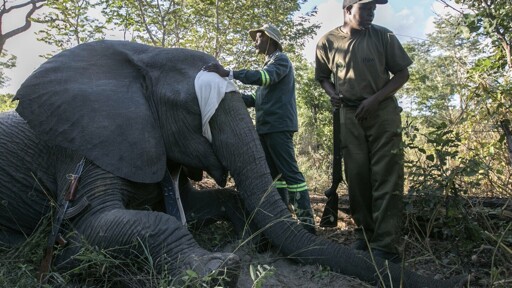HWANGE, Zimbabwe (AP) — When GPS-triggered alerts show an elephant herd heading toward villages near Zimbabwe’s Hwange National Park, Capon Sibanda springs into action. He posts warnings in WhatsApp groups before speeding off on his bicycle to inform nearby residents without phones or network access.
The new system of tracking elephants wearing GPS collars was launched last year by the Zimbabwe Parks and Wildlife Management Authority and the International Fund for Animal Welfare. It aims to prevent dangerous encounters between people and elephants, which are more frequent as climate change worsens competition for food and water.
“When we started it was more of a challenge, but it’s becoming phenomenal,” said Sibanda, 29, one of the local volunteers trained to be community guardians.
For generations, villagers banged pots, shouted or burned dung to drive away elephants. But worsening droughts and shrinking resources have pushed the animals to raid villages more often, destroying crops and infrastructure and sometimes injuring or killing people.
Zimbabwe’s elephant population is estimated at around 100,000, nearly double the land’s capacity. The country hasn’t culled elephants in close to four decades. That’s because of pressure from wildlife conservation activists, and because the process is expensive, according to parks spokesman Tinashe Farawo.


